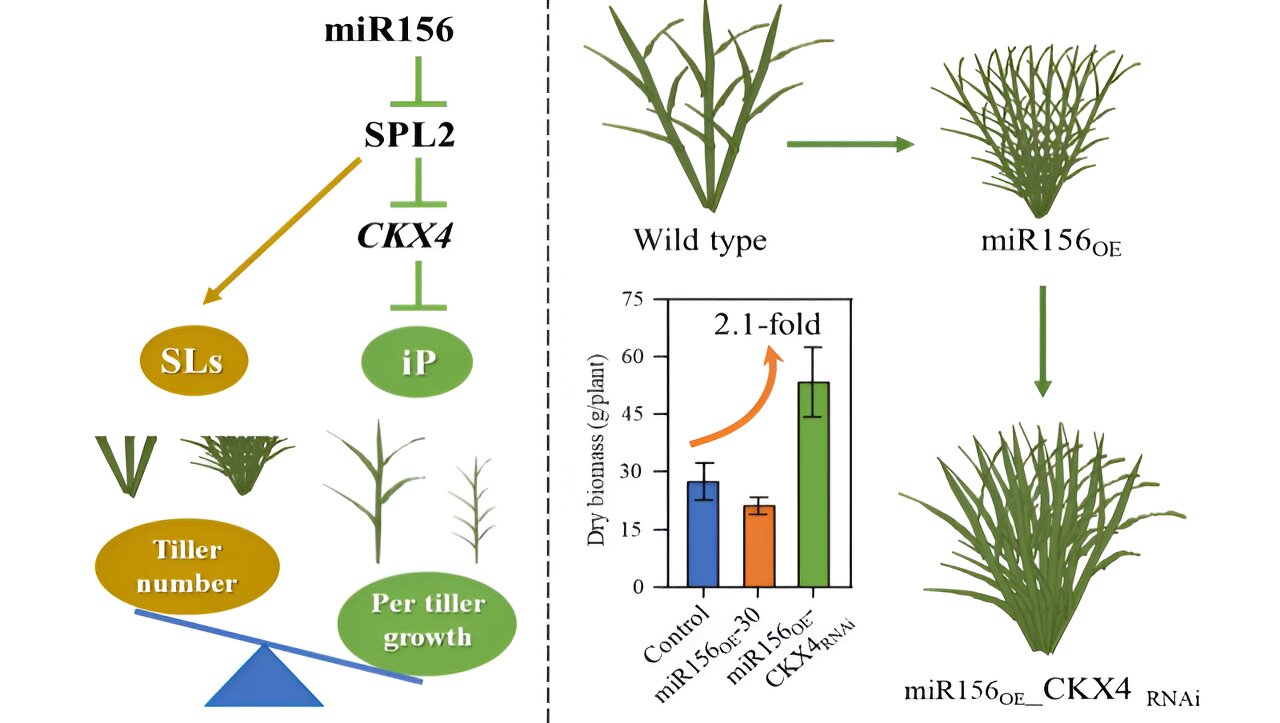Tiller number per plant and the average weight per tiller are two key factors contributing to biomass production in switchgrass and other grass species. However, the excessive grass tiller number always has a negative impact on culm development. The trade-off between tiller number and culm development also limits the application of the miR156-SPL module in further improving biomass in various grass species.
To address the above issue, researchers from the Qingdao Institute of Bioenergy and Bioprocess Technology of the Chinese Academy of Sciences have elucidated the mechanism by which the miR156-SPL-CKX4 module regulates cytokinin homeostasis and then affects culm development in switchgrass. Based on this, novel switchgrass germplasm with higher tiller number and thicker culm can be obtained by the precise manipulation of the downstream gene PvCKX4.
The study was published in The Plant Journal.
Here, the researchers demonstrated that overexpression of miR156 resulted in significant upregulation of the cytokinin oxidase/dehydrogenase gene PvCKX4 in switchgrass. Overexpression of PvCKX4 or miR156 both experienced dwarfing and stem thinning. In addition, the data showed that more PvCKX4 transcript induced the degradation of iP-type cytokinin.
The researchers then found that Squamosa Promoter Binding Protein-like 2 (PvSPL2), a target of miR156, carried out a direct transcriptional repression of PvCKX4. Suppression of PvCKX4 in the miR156-overexpressing transgenic plants reduced the negative effects of miR156 overexpression on culm development, but did not affect tiller number. Dramatically, the double transgenic plants yielded 2.1 times the dry matter of the wild type.
These results indicate that the miR156-SPL module can induce a phenotypic trade-off between tiller number and weight by regulating independent downstream pathways in switchgrass, and that this widely observed phenomenon in grasses can be successfully altered through genetic manipulation of cytokinin catabolism.
Thus, this work will provide a powerful strategy to address the challenges of improving agronomically important traits of forage and bioenergy crops in the future.
More information:
Ruijuan Yang et al, miR156‐PvSPL2 controls culm development by transcriptional repression of switchgrass CYTOKININ OXIDASE/DEHYDROGENASE4, The Plant Journal (2024). DOI: 10.1111/tpj.16728
Provided by
Chinese Academy of Sciences
Citation:
Module regulating culm development changes architecture and improves biomass of switchgrass (2024, April 3)
retrieved 3 April 2024
from https://phys.org/news/2024-04-module-culm-architecture-biomass-switchgrass.html
This document is subject to copyright. Apart from any fair dealing for the purpose of private study or research, no
part may be reproduced without the written permission. The content is provided for information purposes only.


